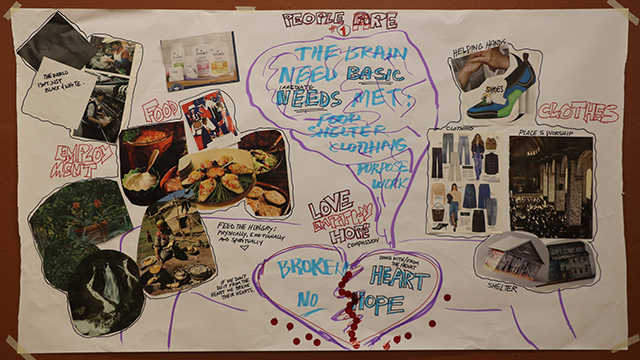A collage made during the workshops by Al, titled “People are #1.” Image credit: Fabian Lopez
Geographies of Utopia: Creating Liberated Lifeways Along the Figueroa Corridor
Kimberly Fuentes, Social Welfare, UCLA
Ideas and Organizing Doctoral Awardee 2024-25
Once home to a thriving working-class community in the 1940s, the Figueroa Corridor in South Central Los Angeles became a site where racial capitalism and environmental degradation intertwined—what Ruth Wilson Gilmore calls “organized abandonment.” The area’s informal economies, including sex work and small motel businesses, emerged as survival ecologies amid urban disinvestment. Today, city redevelopment initiatives are poised to eradicate street-based sex work. This participatory action research project, developed with the Sex Workers Outreach Project Los Angeles (SWOP LA) and the Southern California Library (SCL), explores how sex workers, residents, and small business owners theorize their environment amid overlapping forces of policing, redevelopment, and gentrification.
Across 15 transformative justice workshops (N = 40 participants, ages 15–73), the workshops used narrative inquiry, spatial counter-mapping, and arts-based practices to document how policing, migration, and informal economies shape the neighborhood’s living ecology. Guided by feminist geography and Indigenous relationality, this project situates community memory and spatial storytelling as ecological acts: ways of sensing, remembering, and remaking place. Mapping and collaging together became a practice of feminist environmental sensing that names the entanglements of labor, gender, race, and land that structure daily survival. Following sex workers’ leadership transformed the research from documentation to relational repair: participants began to understand kinship, care, and informal labor as ecological systems of survival—linking abolitionist praxis to the remaking of livable worlds. In doing so, we expanded the methodological and epistemological terrain of demographic inquiry by showing how spatial storytelling methods make visible the lived, affective, and relational dimensions of demographic processes that are otherwise abstracted in population data.




